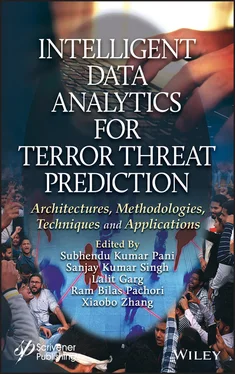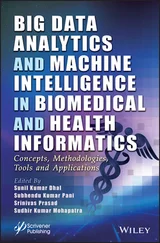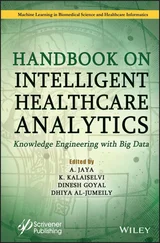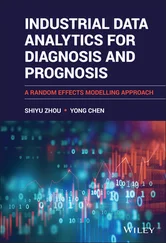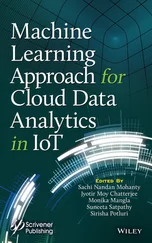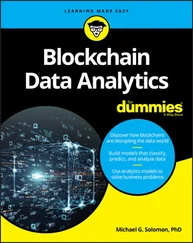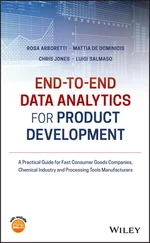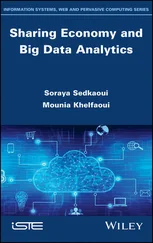1. Bayleyegn, B. W., and Buta, D. B. The Effect of Social Media on Study Habits of Students:-A case study at Oda Bultum University, Oromia Regional State, Ethiopia. Global Journal of Management And Business Research, 2019.
2. Guille, A., Hacid, H., Favre, C., Zighed, D.A., Information diffusion in online social networks: A survey. ACM Sigmod Rec. , 42, 2, 17–28, 2013.
3. Kapoor, K. K., Tamilmani, K., Rana, N. P., Patil, P., Dwivedi, Y. K., & Nerur, S. Advances in social media research: Past, present and future. Information Systems Frontiers, 20(3), 531–558, 2018.
4. Bakshy, E., Rosenn, I., Marlow, C., & Adamic, L. (2012, April). The role of social networks in information diffusion. In Proceedings of the 21st international conference on World Wide Web , pp. 519–528, April 2012.
5. Moore, R. Cybercrime: Investigating high-technology computer crime. LexisNexis, 2005.
6. Smith, A. M. Protection of Children Online: Federal and State Laws Addressing Cyberstalking, Cyberharassment, and Cyberbulling. Congressional Research Service, 2009.
7. Cușmaliuc, C. G., Coca, L. G., Iftene, A. Identifying Fake News on Twitter using Naive Bayes, SVM and Random Forest Distributed Algorithms. In Proceedings of The 13th Edition of the International Conference on Linguistic Resources and Tools for Processing Romanian Language (ConsILR-2018) pp. 177–188, 2018.
8. Cortes, C. and Vapnik, V., Support-vector networks. Mach. Learn. , 20, 3, 273–297, 1995.
9. Shah, D. and Zaman, T., Rumors in a network: Who’s the culprit? IEEE Trans. Inf. Theory , 57, 8, 5163–5181, 2011.
10. Shelke, S. and Attar, V., Source detection of rumor in social network—A review. Online Soc. Netw. Media , 9, 30–42, 2019.
11. Jiang, J., Wen, S., Yu, S., Xiang, Y., Zhou, W., Identifying propagation sources in networks: State-of-the-art and comparative studies. IEEE Commun. Surv. Tutorials , 19, 1, 465–481, 2016.
12. Pastor-Satorras, R. and Vespignani, A., Epidemic spreading in scale-free networks. Phys. Rev. Lett. , 86, 14, 3200, 2001.
13. Newman, M.E.J., The structure and function of complex networks. Soc. Ind. Appl. Math. , 45, 167–256, 2003.
14. Newman, M.E., Threshold effects for two pathogens spreading on a network. Phys. Rev. Lett. , 95, 108701, 2005.
15. Liu, D., Yan, E.W., Song, M., Microblog information diffusion: Simulation based on sir model. J. Beijing Univ. Posts Telecommun. , 16, 28–33, 2014.
16. Jin, Y., Wang, W., Xiao, S., An SIRS model with a nonlinear incidence rate. Chaos Solitons Fract. , 34, 1482–1497, 2007.
17. Boudin, F., A comparison of centrality measures for graph-based keyphrase extraction. Proceedings of the Sixth International Joint Conference on Natural Language Processing , pp. 834–838, 2013.
18. Choi, J., Moon, S., Woo, J., Son, K., Shin, J., Yi, Y., Rumor source detection under querying with untruthful answers. IEEE INFOCOM 2017-IEEE Conference on Computer Communications , IEEE, pp. 1–9, 2017.
19. Choi, J., Moon, S., Shin, J., Yi, Y., Estimating the rumor source with anti-rumor in social networks. 2016 IEEE 24th International Conference on Network Protocols (ICNP) , IEEE, pp. 1–6, 2016.
20. Luo, W., Tay, W.P., Leng, M., Identifying infection sources and regions in large networks. IEEE Trans. Signal Process. , 61, 11, 2850–2865, 2013.
21. Zang, W., Zhang, P., Zhou, C., Guo, L., Discovering multiple diffusion source nodes in social networks. Procedia Comput. Sci. , 29, 443–452, 2014.
22. Mustafa, S. E., & Hamzah, A. Online social networking: A new form of social interaction. International Journal of Social Science and Humanity, 1(2), 96, 2011.
23. Sofiya, G., Lesser known social media platforms you can use for marketing, 2019, April 2. Retrieved from http://fromdrive.com/blog/lesser-known-social-media-platforms-you-can-use-for-marketing/.
24. Clement, J., Social media—Statistics, 2019, Sep 4. https://www.statista.com/topics/1164/social-networks/.
25. Azad, M. M., Mazid, K. N., & Sharmin, S. S. Cyber Crime Problem Areas, Legal Areas and the Cyber Crime Law. International Journal of New Technology and Research, 3(5), 2017.
26. Stopbullying.gov, What is Cyberbullying?, 2020. Retrieved from https://www.stopbullying.gov.
27. Halder, D. and Jaishankar, K., Cyber-crime and the victimization of women: laws, rights and regulations , Information Science Reference, Hershey, PA, 2012.
28. Moore, R., Cybercrime: Investigating high-technology computer crime , Routledge, CRC press, Taylor & Francis group 2014.
29. Kantarcıoglu, M., Vaidya, J., & Clifton, C. Privacy preserving naive bayes classifier for horizontally partitioned data. In IEEE ICDM workshop on privacy preserving data mining, pp. 3–9, 2003.
30. Murphy, K.P., Naive Bayes classifiers , vol. 18, p. 60, University of British Columbia, 2006.
31. Qazvinian, V., Rosengren, E., Radev, D., & Mei, Q. Rumor has it: Identifying misinformation in microblogs. In Proceedings of the 2011 Conference on Empirical Methods in Natural Language Processing pp. 1589–1599, 2011.
32. Hamidian, S. and Diab, M.T., Rumor detection and classification for twitter data, arXiv preprint arXiv:1912.08926, 2019.
33. Graves, Lucas; Amazeen, Michelle A., Fact-Checking as Idea and Practice in Journalism, Oxford Research Encyclopedia of Communication, Oxford University Press, 2019.
34. Fuchs, M. and Yu, P.D., Rumor source detection for rumor spreading on random increasing trees. Electron. Commun. Probab. , 20, 2015.
35. Shah, D. and Zaman, T., Finding rumor sources on random trees. Oper. Res. , 64, 3, 736–755, 2016.
36. Jiang, J., Wen, S., Yu, S., Xiang, Y., Zhou, W., Identifying propagation sources in networks: State-of-the-art and comparative studies. IEEE Commun. Surv. Tutorials , 19, 1, 465–481, 2016.
37. Wang, Z., Dong, W., Zhang, W., Tan, C.W., Rumor source detection with multiple observations: Fundamental limits and algorithms. ACM SIGMETRICS Perform. Eval. Rev. , 42, 1, 1–13, 2014.
38. Gross, T., D’Lima, C.J., Blasius, B., Epidemic dynamics on an adaptive network. Phys. Rev. Lett. , 96, 208701, 2006.
39. Watts, D.J. and Strogatz, S.H., Collective dynamics of ‘small-world’ networks. Nature , 393, 6684, 440, 1998.
40. Albert, R., Jeong, H., Barabási, A.L., Error and attack tolerance of complex networks. Nature , 406, 6794, 378–382, 2000.
41. Li, M., Wang, X., Gao, K., Zhang, S., A survey on information diffusion in online social networks: Models and methods. Information , 8, 4, 118, 2017.
42. Nguyen, D.T., Nguyen, N.P., Thai, M.T., Sources of misinformation in Online Social Networks: Who to suspect? MILCOM 2012-2012 IEEE Military Communications Conference , IEEE, pp. 1–6, October., 2012.
43. Klein, D.J., Centrality measure in graphs. J. Math. Chem. , 47, 4, 1209–1223, 2010.
44. Hage, P. and Harary, F., Eccentricity and centrality in networks. Soc. Netw. , 17, 1, 57–63, 1995.
45. Shah, D. and Zaman, T., Rumor centrality: a universal source detector. Proceedings of the 12th ACM SIGMETRICS/PERFORMANCE joint international conference on Measurement and Modeling of Computer Systems , pp. 199–210, 2012, June.
46. Freeman, L.C., Centrality in social networks conceptual clarification. Soc. Netw. , 1, 3, 215–239, 1978.
47. Louni, A. and Subbalakshmi, K.P., A two-stage algorithm to estimate the source of information diffusion in social media networks. 2014 IEEE Conference on Computer Communications Workshops(INFOCOM WKSHPS) , IEEE, pp. 329–333, 2014, April.
Читать дальше
